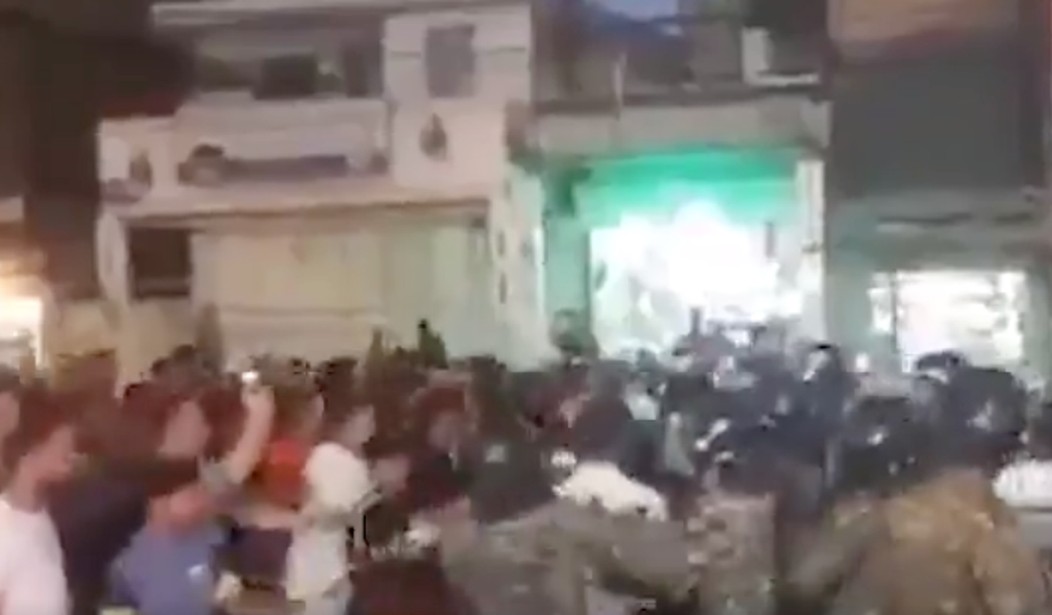Iran is in the midst of its worst drought in 50 years, which has led to a shortage of water. Along with the rolling blackouts, 50 percent inflation, and soul-destroying fundamentalism, the Iranian people may have reached their limit and have taken to the streets demanding a change in government.
IRAN: Protests continue in the oil-rich province of Khuzestan in the heat of the summer. Protesters demand access to clean water.pic.twitter.com/sUBMEs12n3
— Negar Mortazavi (@NegarMortazavi) July 19, 2021
The protests started in southwest Khuzestan Province and spread to the nearby city of Aligudarz. The demonstrations have now engulfed 30 cities, according to independent media sources. Amnesty International reports that security services have opened fire on protesters, killing as many as 10 Iranians, although the authorities claim only three were killed after “suspicious bullets” were shot “by some unknown people who penetrated among peaceful protesters,” state media said, according to CNN.
Several videos uploaded by social media users last week showed security forces using tear gas to disperse protesters, with another video on social media showing activists gathering outside the Tehran Interior Ministry to voice support for Khuzestan protesters.
“We call on law enforcement forces not to harm protesters calling (for) access to water,” a prominent activist, Narges Mohammadi, said in the video.
What makes the protests significant is that the Iranian people are making a strong statement about the recently elected government headed by the fanatical jurist Ebrahim Raisi.
The unrest comes during a delicate political transition in Iran and at a moment when the government is wrestling with overlapping crises: an unrelenting coronavirus outbreak, economic woes compounded by U.S. sanctions and widespread power outages that have set off other protests. In recent weeks, there have also been waves of labor unrest, including strikes by oil workers.
The challenges will test Iran’s incoming president, Ebrahim Raisi, who will assume office next month. Raisi was the winner of an election marked by voter apathy and allegations that the ruling clergy stacked the contest in favor of the hard-line cleric and former judiciary head.
Raisi is one of the regime’s chief enforcers, having greenlighted thousands of executions during the 1980s. The protesters know his record and what his election means to their chances for any meaningful reforms going forward.
It may be that Supreme Leader Khamenei has decided that a stronger hand at the tiller is needed to get Iran out of the economic mess it’s in. Raisi has no record of fighting corruption — an issue he ran heavily on. And yet it is corruption that is hamstringing the economy, exacerbated by the drought and government mismanagement of resources.
About 90 percent of Iran’s overall water resources go toward the agriculture sector, which is beset by draining groundwater after the depletion of surface-level sources. Adding to the pressures, regional increases in temperatures attributed to global warming have led to more-extreme droughts, dust storms and other climate-related crises.
“If you are a policymaker in the developing world, or like in the Middle East, it is best to blame everything on climate change because then you can say: ‘This was caused by climate change. I had no role in it. I could not have done anything to help it,’” Kaveh Madani, an environmental scientist and Iranian dissident, said in a lecture at Utah State University in 2019.
Related: France, Germany, and Britain Sound Alarm on Iran’s Nuclear Moves. The U.S…?
Whether it’s corruption, incompetence, or the chimera of climate change, the Iranian people are thirsty and the government can’t help.










Join the conversation as a VIP Member